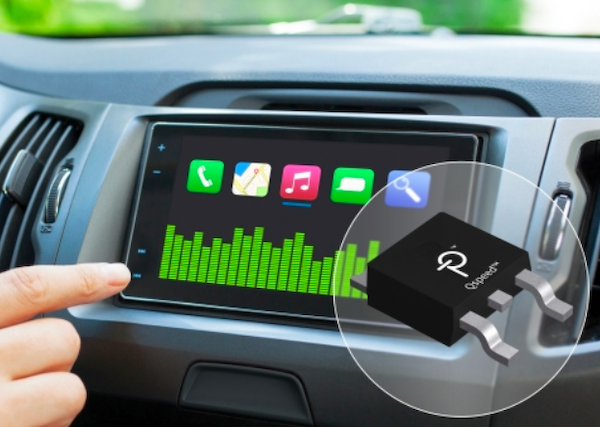What the Audio Amplifiers Do
Qspeed silicon diodes use merged-PIN technology, which delivers a unique balance of soft switching and low reverse recovery charge. The result is that a low EMI is produced along with reduced noise output.
The newly-released 200V diodes present the industry’s lowest reverse recovery charge of around 32.4 nanocoulombs (nC) at a junction temperature (aka TJ) of 125°C, and a diode softness ratio of 0:39. With the diodes, the high-frequency EMI ingrained in Schottky rectifiers (which are often used in Class-D power amplifier output stages) is minimised.
Datasheets available for the diodes show that they are designed for use with high-temperature, lead-free solder. When this is the case, the component leads can be subjected to temperatures of up to 300°C for up to 10 seconds.
Key Features of the New Diodes
The product’s common cathode package aims to reduce the amount of mounting hardware that is needed in interleaved and bridgeless topologies. The main characteristics of the new diodes include:
LQ10N200CQ
A 10A device with 5A in each diode, with the stated reverse recovery charge of 32.4nC. The typical maximum reverse recovery current per diode at 25°C is 2.6A.
LQ20N200CQ
A 20A device with 10 amps in each diode, with a reverse recovery current per diode (which is a little higher than its above counterpart) at 48.4nC. The typical reverse recovery current per diode at 25°C is 3.29A.
Each of the diodes features a diode softness ratio of 0:39. This is the key feature that minimises the high-frequency EMI within the Schottky rectifiers, used in Class-D power amplifier output stages.
As Q-series diodes use Schottky technologies in both their design and construction, component engineers should take this into consideration: test setups should be similar in nature.

A car speaker system: a primary use for the new diodes. Image courtesy of Pixabay.
Primary Applications of the Audio Amplifiers
Schottky diodes have a sudden reverse recovery, which causes ringing that results in EMI and noise in sensitive Class D amplifiers. This makes Power Integration's automotive-qualified 200V Qspeed diodes the ideal solution for in-vehicle audio amplification applications. This is something that the automotive audio industry has been calling out for for some time.
Key qualities include:
-
Automotive suitability (AEC-Q101-qualified)
-
Fabrication, assembly and test certified to IATF 16949
-
ESD HBM classification H0
The Overall Benefits of the New Diodes
The new 200 V Qspeed silicon diodes use merged-pin technology to balance soft switching and low reverse recovery charge. This helps to ensure low EMI and the reduced noise output required for in-car audio systems. The diodes offer many benefits, increasing efficiency, eliminating the need for snubber circuits, reducing EMI filter component size and count and enabling extremely fast switching.
The LQ10N200CQ and LQ20N200CQ diodes are available now, priced at $0.60 and $0.74 respectively in 10,000 quantities. Component engineers can find technical support on Power Integrations’ website.




